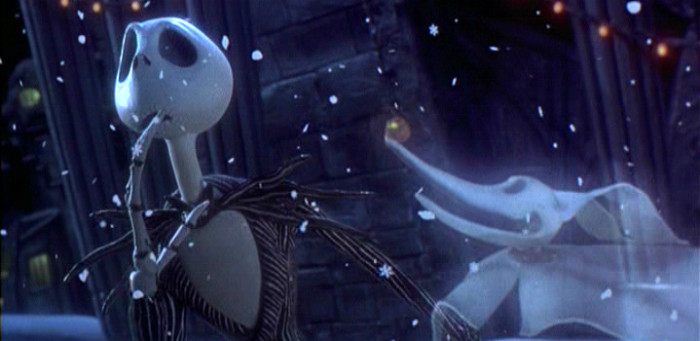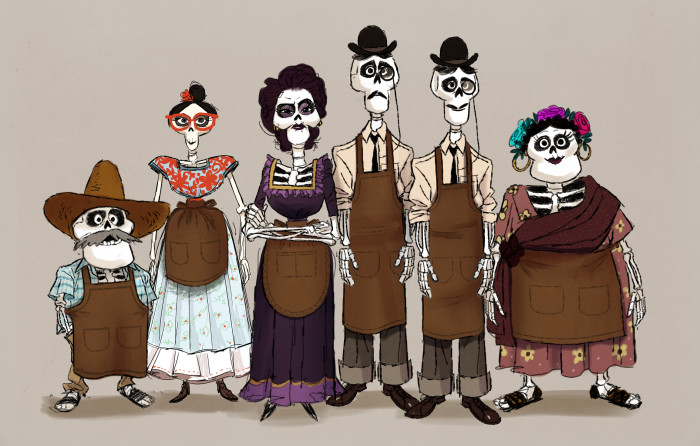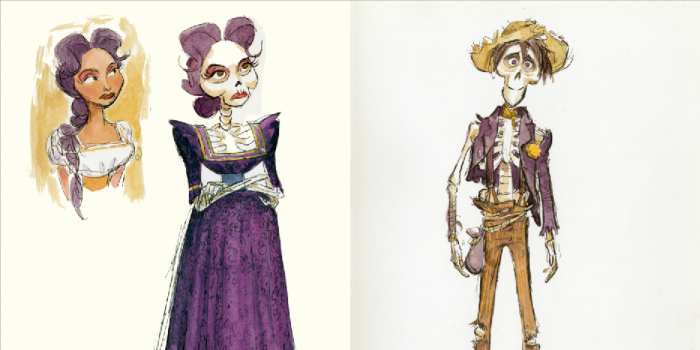From Nightmare To Family: Bringing Skeletons To Life In 'Coco'
Skeletons are no stranger to animation — or reanimation. One of Disney's earliest short films, Skeleton Dance, featured some surprisingly dexterous skeletons dancing in a graveyard, and animated films throughout the years have kept up the spooky tradition, from the 1993 classic Nightmare Before Christmas to 2005's The Corpse Bride.
It was not even the first time these bags of bones would be rendered in CGI animation, with 2014's The Book of Life bringing skeletons into the modern age. However, this was the first time that Pixar has attempted to animate skeletons, so they tackled the challenge with the meticulous precision that the studio is known for.
But it should be no problem for a studio that made audiences fall in love with toys, rats, and bugs, right? Well, there was a particular challenge that skeletons presented to Pixar animators of Coco — specifically, how bare bones it was. Literally. The lack of muscles, tissue, and facial hair presented a huge obstacle for the animation team, who worked on developing the 80+ distinct skeletons in the film since 2012.
Supervising animator Gini Santos said "We knew we could do something new and fun, but something weirdly familiar," adding:
We've never animated skeletons at Pixar so this was a challenge. We draw a lot from our tissues on top of the bones for a lot of features, including the motion animation. And figuring out how we would animate these skeletons and make them believable characters meant coming up with some guidelines and rules for ourselves that would respect the structure and designs but still permit emotion and personality.
Coco is Not Trying to Revive Past Depictions
There will inevitably be comparisons drawn to past skeleton-starring features to Coco, namely 2014's The Book of Life, which tackles a similar concept — a character gets stuck in the afterlife on the Day of the Dead — but director Lee Unkrich said that they tried to stray as far away from previous depictions of the undead as possible:
We looked at every movie we could think of that had some depiction of the afterlife. And in most cases in showed me what we didn't want to do. It's an interesting thing — I think we have this innate desire to know what's beyond, so we have a lot of movies that kind of have a visual depiction of that. And in every case we want to know, but then we don't like how limited those views are, except in really stylized defending your life where just going purely for comedy. We tried to forge our own path and do something unique and different than what anybody had done, and tried to keep it grounded in a reality rather than just going for a completely crazy environment. We just tried to come up with a logic for why everything was the way it was. I think you have to do it otherwise it's anything goes.
Past depictions too, like Nightmare Before Christmas, are famous — or infamous — for scaring the small children who are meant to be their audience. Coco didn't set out to avoid that pitfall, but animators hoped to make the skeletons less menacing altogether.
The animators even tossed aside looking at previous cinematic depictions of skeletons when looking for references upon which to base their character designs. Daniel Arriaga, Coco's character art director, said they went to the bare basics when designing the characters — wanting to go for a balance between realism and the fantastical:
The skeletons presented a huge challenge for us: No. 1, they're very scary. So as we do with any film, we just get a ton of references to try to teach ourselves about what it is we're designing. So we got a bunch of skulls and skeletons. And if I saw that talking, I'd run, you know? But we did want to stay true to the skeleton as well so we had to learn as much about it as possible. We actually got a real skeleton, the kind you have in schools, and tried Photoshopping clothes on it. But the thing about skeletons is that you lose all the things that give us character: your eyes, your nose, your mouth, your muscle tissue. And in the end, we all look the same.
“Embrace the Skeleton”
Emron Grover, the cloth simulation lead for Coco, revealed that with clothing, there's "a lot of cheating that we hope you'll never see." But with skeletal characters, much of their body — especially the scene-stealing vagabond Hector (played by Gael Garcia Bernal) — will be out in the open, thus presenting a whole new spate of challenges. Grover said:
One of Lee and Adrian's big mantras for the cloth and a lot of other things was "embrace the skeleton." So they wanted to see as much skeleton underneath as possible, and when the skeleton was covered by cloth, they wanted to feel the bones under the cloth.
Over the course of 3 to 4 years, animators came up with ways to overcome challenges with how cloth collides with the body, with painting all 127 bones in each skeleton that appears in the movie, and for facial emotion. In the case of facial emotion, there proved to be a Day of the Dead-relevant shortcut: face paint.
The face paint could help skeletons simulate eyebrows — a huge part of how humans portray emotion — though Arriaga said they had to be careful with the amount of face paint they used, lest it be too distracting.
But the most amusing bit of world-building that the animators created to help with giving skeletons emotion was that the skeletons wear wigs and glued-on facial hair in an effort to recreate their look from when they were living.
How to Make Skeletons Appeal to Kids
But the most important question surrounding these skeletons is whether they'll scare kids. And for now, that remains mostly unanswered, as character shading lead Byron Bashforth said most of the testing the animators did on the reception to the skeletons was within Pixar. "We did a lot of internal testing with ourselves, show it to Lee and Adrian and see how they feel about the choices we're making," Bashforth said.
Santos added:
As far as scaring kids, we get that question a lot. For us too, the ultimate kind of universal symbol for death are these characters. We really wanted them to be lovable. So these characters, starting with the design to adding character to how they move, making them feel like they have the same insecurities that we do.
But context is everything. In the testing that they did do, Arriaga said, "We found out too that [the fact that] Miguel isn't afraid of them really helped the audience not be afraid as well."
Coco hits theaters November 22, 2017.



